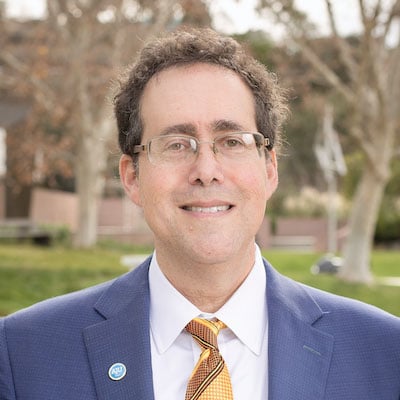
It’s impossible for anyone living in the Greater Los Angeles area to forget the terrible fires of a few months ago. December’s fires ravaged Bel Air and land off the 405 Freeway but extended far beyond. Throughout the the Central Coast and Southern California, stretching as far north as Ventura and Ojai, and south to Orange County and San Diego, ruthless flames, fanned by seasonal winds and chronic shortfalls of rain that have become a new normal, combined to produce levels of devastation that seized the attention of the entire nation and dominated the news and conversations of everyone in the region. Those fires threatened cultural treasures of the region, among them the Getty Center, UCLA, American Jewish University and others.
One famous video gained particular notoriety, showing the flames descending the mountains of Bel Air and Westwood, impeded only by the 405 Freeway. Those of us whose commute takes us along that route were terrified by the size, speed and proximity of those flames. In the days and weeks that followed, we observed a mute tribute to the powers of destruction as we drove next to the charred and denuded hills, which until then had been bountiful in shrubs, grass, trees and life.
There was one hill, east of the freeway, whose flora had been completely burned to ground level. Nothing living remained on its barren, blacked landscape except at the very peak. One lone tree had survived, and I would salute it every morning as I drove to work, honoring its tenacity and resilience. Life doesn’t give up without a fight.
Four months later, we recently finished celebrating two ancient festivals of spring, Passover and Easter, both of which celebrate forms of rebirth. Judaism’s Passover celebrates the liberation of ancient Israel from Pharaoh’s slavery, the rebirth of a people into freedom and self-determination. Easter celebrates the resurrection of Christianity’s messiah and the possibility for rebirth for its adherents.
As I drive toward Mulholland on the 405, I see those same hills, so recently denuded and bleak, now covered again with patches of bright green grasses.
I don’t think it is a coincidence that both of these festivals of resurgence, renewal and hope take place in the springtime. As I drive toward Mulholland on the 405, I see those same hills, so recently denuded and bleak, now covered again with patches of bright green grasses. Even some of the scorched trees show fuzzy green buds, gearing up to bloom where there was only death and destruction a few months ago. The hills themselves trumpet an ancient spiritual truth: Life carries with it the determination for self-renewal. What was once destroyed can thrive again. As the psalmist promised millenniums ago: “Weeping may tarry in the night, but joy comes in the morning.”
We need that reminder now. In the bleak wreckage of today’s partisan battles, as human greed and venality looms across lines of race, gender, ability, religion, orientation (and so many others), small wonder that the world’s wisdom traditions join with the season itself to remind us of a timely truth: We can turn this around, we can thrive again, all of us. If we dare hold onto hope, if we are willing to trust in the promise, we, too, can be vessels of a springtime rebirth.
Rabbi Bradley Shavit Artson holds the Abner and Roslyn Goldstine Dean’s Chair of the Ziegler School of Rabbinic Studies and is vice president of American Jewish University in Los Angeles.























 More news and opinions than at a Shabbat dinner, right in your inbox.
More news and opinions than at a Shabbat dinner, right in your inbox.